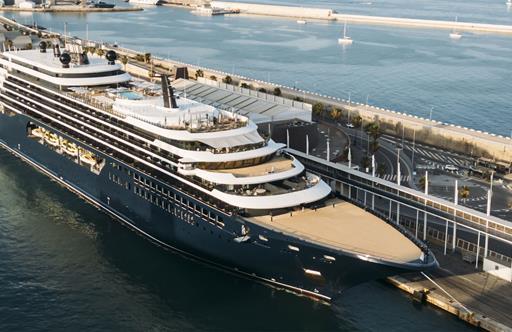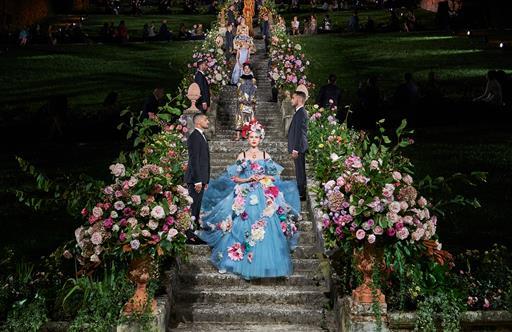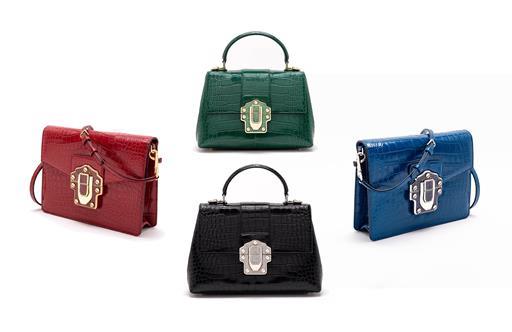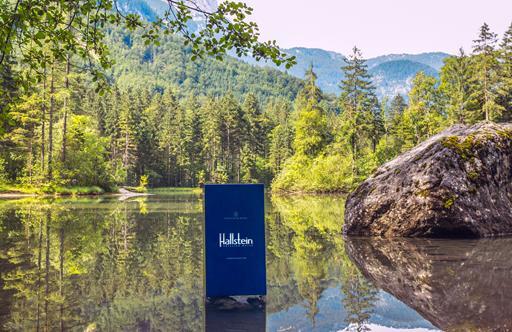Moving on Up
With global wealth increasingly mobile, a number of emerging and classic residential markets are trending upwards.
Dubai
By just about any metric, Dubai is booming. The city leads the global residential super-prime tables with price rises in the last 12 months of over 25 per cent, while the number of homes sold for over $10m has risen fourfold in the last five years, according to global realtors Knight Frank. Despite this, international investors know that, in terms of price per square metre, Dubai still represents good value compared to Hong Kong, London and New York.
The high quality of life, low taxation and hot climate, plus its geographical position at the crossroads of Europe, Africa, the Middle and Far East, make Dubai the top city globally for attracting and developing individual wealth, according to the Savills Dynamic Wealth Index. A view across Bluewaters Island, one of Dubai’s fastest-growing residential hubs (Photo Riyas Mohammed / Unsplash)
A view across Bluewaters Island, one of Dubai’s fastest-growing residential hubs (Photo Riyas Mohammed / Unsplash)
In 2025, a big part of the story revolves around a shortage of supply. Consequently, off-plan sales of super-prime villas are up substantially: in 2020, they represented just 14 per cent of their market, in 2024, 69 per cent. So, what projects in which districts are in the spotlight?
“Recent master-plan announcements include the development of Jebel Ali Racecourse,” reports Andrew Cummings, Savills’ man in the region, “alongside launches such as Emaar’s Grand Polo Club & Resort.” Other off-plan schemes coming on stream include, for apartments, Six Senses Residences, Serenia Living, Baccarat Residences and Vela Viento. For villas: Palm Jebel Ali, Damac Islands, District One West villas and The Acres all catch the eye.
Among the older villa communities, Jumeirah Islands and Jumeirah Golf Estates are both seeing a resurgence, while Palm Jumeirah and Downtown Dubai are notable for apartments. Of course, the potential for conflict in the region is always a factor, but right now, both lifestyle buyers and investors like what they see. The population of Dubai will reach four million by the end of the year – double the figure just 14 years ago – and together with wealth migration patterns and the emirate’s relative global value, the future for this particular property magnet continues to look promising.
Tuscany Villa Capponi, a 14th-century aristocratic residence perched on a hill overlooking Florence, has been retrofitted with 14 apartments (© Maurizio Sorvillo)
Villa Capponi, a 14th-century aristocratic residence perched on a hill overlooking Florence, has been retrofitted with 14 apartments (© Maurizio Sorvillo)
With a little more history behind it, it was Renaissance masters Leonardo da Vinci, Michelangelo and Fra Angelico who first put Tuscany in their frescoes, and on the map. Rather more prosaically, well-heeled British visitors in the 1980s dubbed the region around Florence, Siena, Pisa and Arezzo, Chiantishire. And 40 years on, the enduring appeal for potential buyers of the seductively scenic Tuscan countryside has been further boosted by recent tax changes.
Under Italy’s new flat tax, individuals who transfer their tax residency to the country pay only €200,000 a year on all foreign-sourced income, regardless of the actual amount earned, while homes sold after five years attract no capital gains tax at all. Add in sublime food, good flight connections and international schools in Florence, Lucca and Siena, and it’s no surprise the number of foreign residents living in Tuscany, according to Istat, is up 11.2 per cent over the last decade, with price growth in the past five years outpacing the South of France.
“This culturally rich region is a particular lifestyle favourite for Brits and Americans,” remarks Andrew Blandford-Newson of Knight Frank. “The typical ask is for a fully restored farmhouse with a pool and a few hectares of land, including a vineyard and some olive trees.”  The evocative grounds of Knight Frank’s strikingly restored stone farmhouse and vineyard near Siena (© Maurizio Sorvillo)
The evocative grounds of Knight Frank’s strikingly restored stone farmhouse and vineyard near Siena (© Maurizio Sorvillo)
The Uffizi and the Palio still draw the crowds, but buyers wanting privacy and more space are heading for the Val d’Orcia, south of Siena, says Blandford-Newson. “It’s aesthetically unbeatable with sweeping views of the Tuscan hills. There’s a two-hour drive from Florence Airport, but since Covid, owners are making longer visits, so that’s less of an issue. A big plus is that for a typical podere [rural estate], the planning regime is slightly more relaxed than around Florence.”
Near Montalcino, famous for its rich red Brunello wine, Knight Frank currently has a five-bedroom period farmhouse on its books with a functioning cantina, 20m pool and caretaker’s cottage, plus 12 hectares of land, half devoted to vines. If la dolce vita equals low maintenance for some buyers, Knight Frank also has 14 lavish apartments in the newly refurbished 14th-century Villa Capponi, a 20-minute drive from Florence.
Yet another sign of the region’s renaissance is the launch by Discovery Land, the American company with over 30 immaculate developments worldwide, of Tenuta Toscana, a resort based around the Medieval hamlet of Castelfalfi, complete with 27 holes of golf.
The Hamptons 67 Hither Lane, a six-bedroom villa in East Hampton’s coveted Village South neighbourhood (Image: Chris Forster)
67 Hither Lane, a six-bedroom villa in East Hampton’s coveted Village South neighbourhood (Image: Chris Forster)
F Scott Fitzgerald’s The Great Gatsby was set closer to New York City than the uber-chic Long Island neighbourhood bounded by Montauk in the east and the Shinnecock Canal to the west, but something of the lazy decadence associated with the 1920s Jazz Age still attaches to the Hamptons today.
Wall Street Masters of the Universe and a good few showbiz types chill out during the summer in and around Sagaponack, East Hampton, Southampton, Bridgehampton and Amagansett, an area “South of Highway 27” that attracts a hefty price premium. The golf is world-class, the Sag Harbor-based sailing scene blissfully laid-back, clubs like the Maidstone suitably exclusive, and the beaches dreamy.
But the last five years have seen a change. “Prices during the pandemic went through the roof, even in Westhampton and Quogue, which represent slightly better value,” says the local Douglas Elliman realtor Martha Gundersen. “People realised that the Hamptons are viable year-round, with fresh air, safe from viruses. A normal market has now resumed, but the move to hybrid working, with people splitting their time between here and NYC, has changed the character of the area.” An as-yet-unbuilt proposal for the Sag Harbor-adjacent development lot along Noyack Bay © Elliman
An as-yet-unbuilt proposal for the Sag Harbor-adjacent development lot along Noyack Bay © Elliman
Towns are typically split 50:50 between permanent and seasonal residents. “Nowadays, people want turnkey homes to move straight into, frequently funded by generational wealth,” Gundersen points out. “The light is great, so we have a huge art community with many galleries – Larry Gagosian has a place here, so does Paul McCartney. There’s a family vibe to the Hamptons; it’s visually beautiful, secure, and we respect each other’s privacy.”
She is selling a modern, six-bedroom, nearly 750sq m mansion on Hither Lane in East Hampton with an impossibly high spec that includes glass curtain walls, soaring four-metre ceilings, and impeccable architectural detailing. Close to Sag Harbor, she also has an exceptional 1.6ha parcel of land with just under 100 metres of private waterfrontage that would suit an ultra-contemporary design of home.
According to The New York Times in 1893, “these beautiful villages … combine to make as close an approach to Eden as can be found in a long journey. Exclusive – in the best sense of the word – society is here represented during the summer by its choicest spirits.” Even 132 years on, not much has changed.
Branded Residences The Aman Residences at Amanruya (image: Leigh Gabriels)
The Aman Residences at Amanruya (image: Leigh Gabriels)
The fastest-growing sector of the international super-prime market involves new developments associated with trusted brands. These schemes fall into two categories: those associated with five-star hotels such as Four Seasons, Mandarin Oriental, Rosewood or Aman; and projects that use a “name” and expertise associated with design, fashion and automotive firms, such as Pagani, Armani or Porsche, to promote their venture.
The attraction for hotel-related sellers, according to a recent Savills branded residential report, is straightforward. “Analysis of a sample of markets demonstrates that the global price premium stands at an average of 33 per cent.” In other words, new hotel-branded residences cost on average 33 per cent more than equivalent homes of similar quality nearby.
For buyers – especially those who already own other residences around the world – the advantages of a new home associated with a five-star hotel are management- and service-related: access to amenities such as spas, golf courses and restaurants, easy-care maintenance like housekeeping and landscaping, good security and concierge services. Then there’s the trust and confidence in a brand and a perceived guarantee of design and build quality.
Four Seasons has, for some time, been a leader in the field, and currently has 57 Private Residence schemes across 28 countries, with a balanced portfolio split between urban and resort destinations. “With every Four Seasons Private Residence, we set out to create the pinnacle of refined living,” says Chris Meredith, head of its residential offering. “Discerning residents worldwide enjoy private homes alongside luxury amenities, dedicated property management and personalised service – all hallmarks of the Four Seasons experience.” The forthcoming Porsche Design Tower Bangkok © Porsche
The forthcoming Porsche Design Tower Bangkok © Porsche
The company has recently opened 25 units at Tamarindo in Mexico, and has 82 apartments in a standalone development in Istanbul as well as a coastal retreat in Jeddah’s Corniche district opening soon. Also on the radar are new projects in Miami’s Coconut Grove, Las Vegas, the Bahamas, Washington, DC and on the Caribbean island of Nevis.
Aman has a reputation for Zen-like excellence in far-flung parts of the world, but has more recently opened properties in New York and Bangkok, both with branded residences. In the pipeline are schemes in southern Utah, where 12 more villas are being built next to the existing Amangiri hotel, and, opening later this year, Amanvari in Mexico, where John Heah has designed 48 waterside homes ranging in size from four to seven bedrooms.
“Aman-branded residences are offered in many of our destinations from New York to Tokyo, and the majority of our forthcoming projects will include them,” says chairman Vlad Doronin. Eleven new villas are launching next to Ed Tuttle’s incomparable Amankila, overlooking the Lombok Strait in Bali, and, to accompany Aman’s fourth foray into Japan, 31 new free-standing, two-storey residences are being created at Niseko on Hokkaido. Amanruya, on Bodrum’s serene north coast, has also recently launched new villas with Jean-Michel Gathy’s name attached.
Mandarin Oriental has residences in Bodrum, too, one of 12 schemes globally, with others in Barcelona, Macau and Muscat. A further 19 projects are in the pipeline, including ones in the Saadiyat Cultural District of Abu Dhabi, the Maldives, two in Vietnam, and Grand Cayman. Rosewood, Ritz-Carlton, Six Senses and One&Only are other luxe hotel groups with growing portfolios in this space. (See page 88 for an in-depth look at one such urban project.) © Mandarin Oriental
© Mandarin Oriental
“When you’re buying a hotel-branded residence, you’re principally buying a lifestyle rather than an investment,” suggests Rico Picenoni of Savills. “The longevity of these major hotel brands suggests the asset value will be protected and there will probably be a rental programme generating income, but for most UHNWIs, that represents an attractive bonus rather than an investment opportunity.
“Non-hotel brands are more product- rather than service-oriented. There’s still a price premium because the association improves the profile of the development, and the design may incorporate elements of the brand,” says Picenoni. “And for any development licensed under a name like Porsche, for instance, its design team will have certain rights of review and approval.”
But the added value of some non-hotel marques can be a little opaque. “Any brand needs to deliver a compelling value proposition in order to drive premiums,” avers the Savills man. “But in some cities, Dubai specifically, certain brands aren’t really delivering any lifestyle value at all – they’re simply a marketing tactic.” Bentley's penthouse towers (© Bentley)
Bentley's penthouse towers (© Bentley)
Miami and Dubai are prime locations for non-hotel-branded residences, with automotive marques to the fore. The first Bentley-branded residential tower, overlooking Miami’s Sunny Isles Beach, has a particularly eye-catching two-storey penthouse on the 61st floor. In North Bay Village, the new Pagani Residences, and, on Biscayne Bay, Aston Martin Residences, aim to compete in the same super-prime market.
There is also a Porsche Design Tower in Miami, as well as another coming soon in Bangkok. Mercedes-Benz, Bugatti, Aston Martin and Lamborghini are also involved in projects in Dubai and Ras Al Khaimah. In Vietnam, the new Nobu Residences Danang on the legendary My Khe beachfront is making waves.
Design firm Pininfarina has a growing portfolio of high-end projects in Brazil, while Yoo, a brand associated with Philippe Starck, has 44 active projects worldwide, according to Savills. Armani, Baccarat, Fendi and Bulgari are also leveraging their brand equity internationally. “But non-hotel brands will need to partner with hotels that share their vision if they are to compete more effectively and provide top-class service that, at the moment, they cannot reliably deliver,” declares Picenoni.
The term “branded residences” is becoming increasingly elastic, so discernment is essential when distinguishing between genuine value and marketing hype.
Header: Dusk settles over the Louvre Abu Dhabi on Saadiyat Island – which is also home to Mandarin Oriental’s portfolio of one- to five-bedroom residences © Mandarin Oriental













